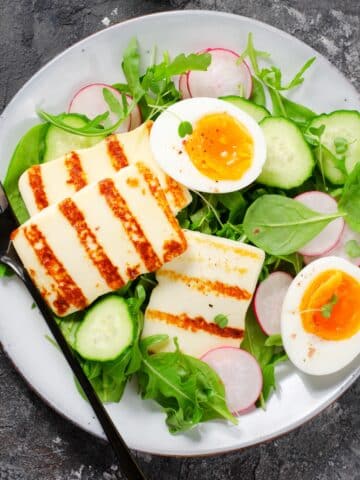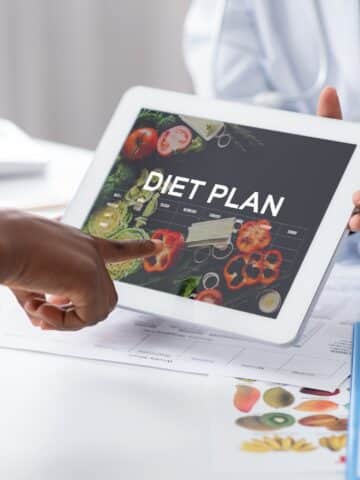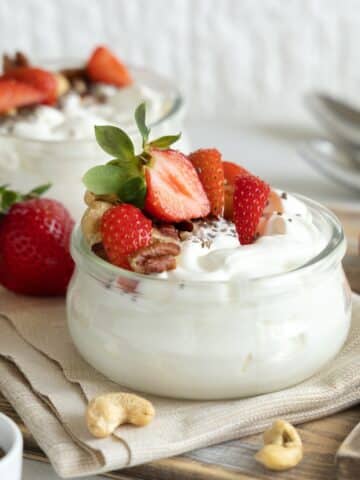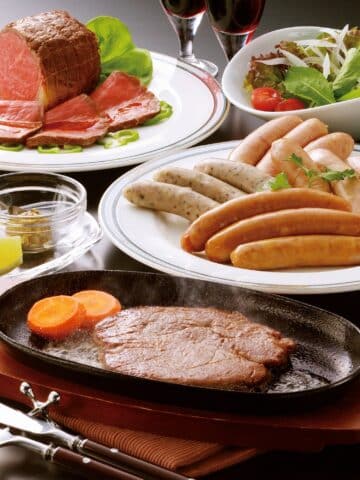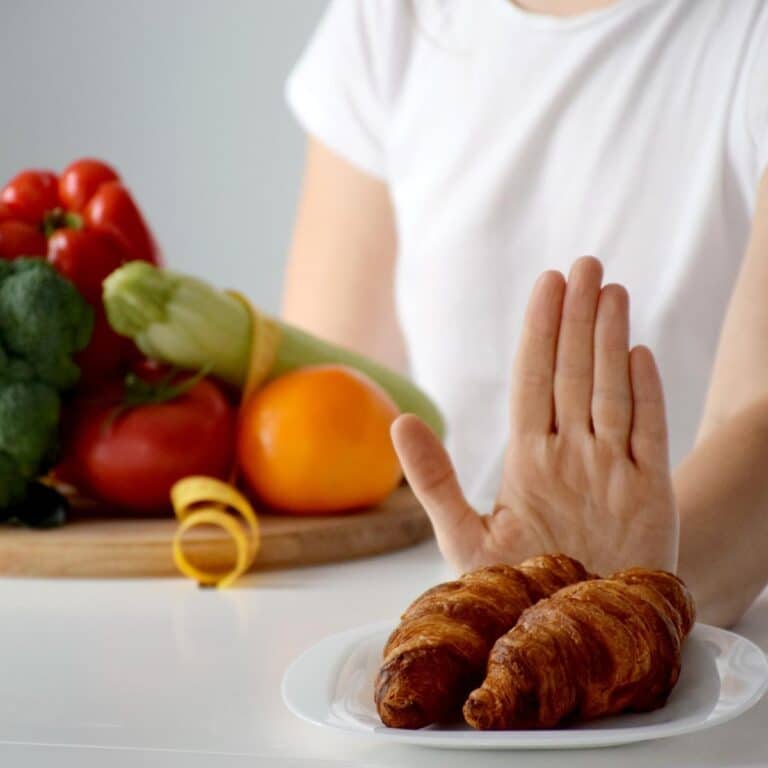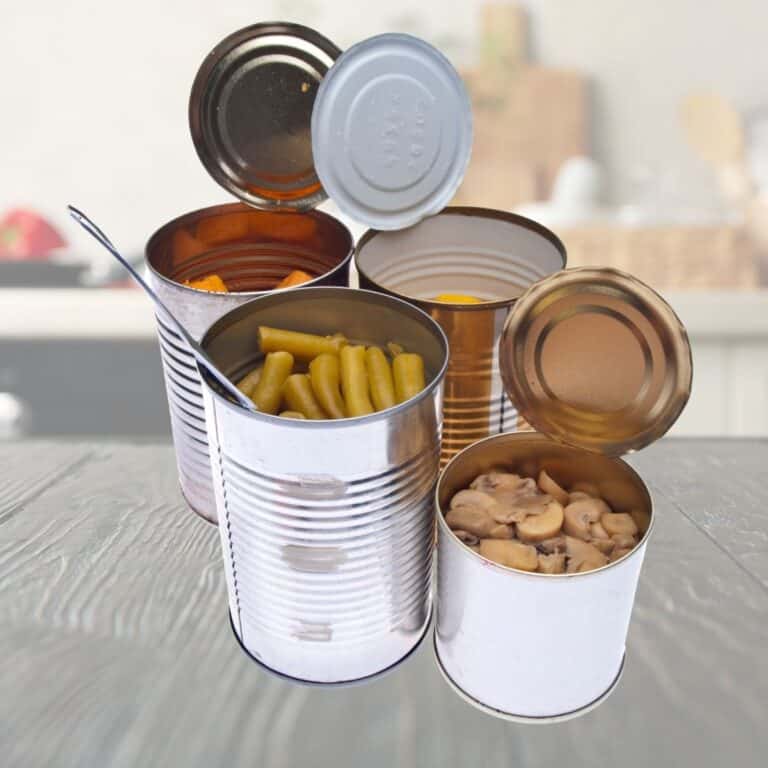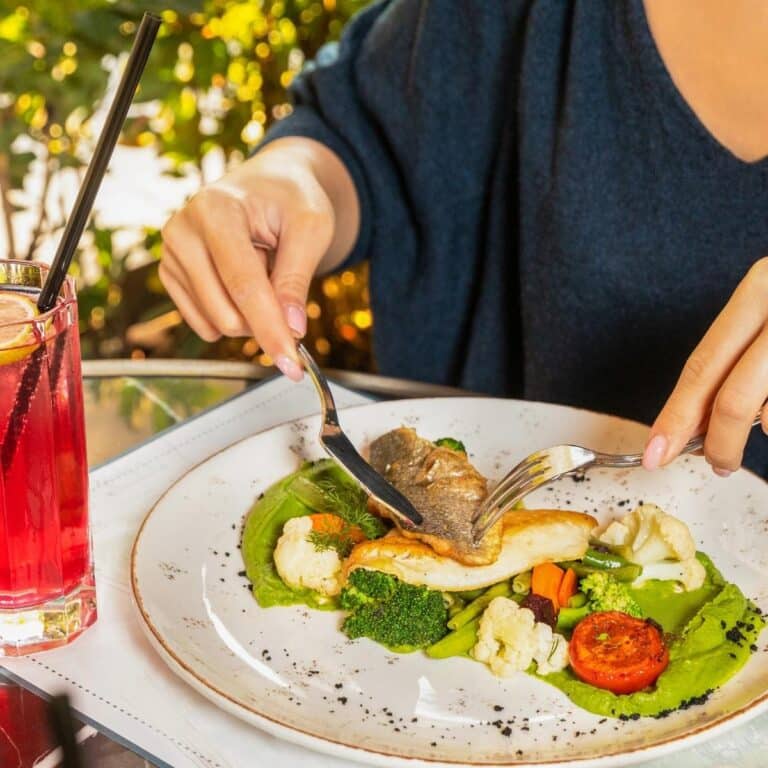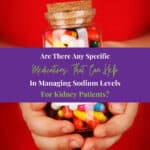Reduce Sodium Intake on a Renal Diet
You're in a bustling grocery store, scanning labels, seeking healthier options for your renal diet. It's time to unmask the silent, pesky intruder in your food, sodium.
Overconsumption can be a hidden threat to your kidneys. But don't worry! You're not alone in this. We'll guide you through understanding sodium's impact, identifying its sneaky sources, and reducing your intake.
Let's empower you to make smarter, kidney-friendly dietary choices.
Jump to:
- Key Takeaways
- Understanding the Role of Sodium in Our Bodies
- The Dangers of Too Much Sodium for Kidney Patients
- Determining a Safe Level of Sodium Intake
- Deciphering Sodium Content on Food Labels
- Uncovering Hidden Sodium in Everyday Foods
- The Benefits of Home Cooking and Whole Foods for Sodium Control
- The Surprising Sodium Content in Condiments
- Making Dietary Changes for Better Kidney Health
- General Strategies for Managing Sodium Intake
- Practical Tips for Lowering Sodium in Your Diet
- FAQs for Reducing Sodium Intake on a Renal Diet
- Reduce Sodium Intake on a Renal Diet
Key Takeaways
- Consuming excessive sodium can have negative effects on kidney health, so reducing sodium intake is crucial for individuals on a renal diet.
- Sodium awareness campaigns are important for spreading knowledge about the risks of high sodium intake and the importance of managing sodium levels.
- Hydration is essential for flushing out excess sodium from the body.
- Renal dietitians can provide personalized diet plans and help individuals uncover hidden sodium in everyday foods, enabling better control of sodium intake.
Understanding the Role of Sodium in Our Bodies
You might be surprised to learn that sodium plays a crucial role in your body for people with kidney disease.
It helps maintain fluid balance, aids in nerve transmission and muscle contraction, and is essential for maintaining blood pressure.
However, it's important to note that excessive sodium intake can lead to high blood pressure, posing a risk to your heart and kidney health.
For More Recipes and Ideas --->> Get Your Free Meals and Recipes That Are Perfect for Pre-Dialysis Diets, Pre-Dialysis with Diabetes, or Dialysis Diets.
Sodium's Function in Body
Surprisingly, your body can't function properly without sodium because it's crucial for maintaining fluid balance and transmitting nerve impulses. However, a balance is key.
Sodium's toxicity can lead to high blood pressure and heart disease. Conversely, sodium's deficiency, known as hyponatremia, can cause headaches, nausea, and in severe cases, coma or death.
Here's an overview of the sodium process:
- You consume sodium through food or drink.
- It's absorbed in the digestive tract.
- The kidneys regulate the amount of sodium in your body.
- Excess sodium is excreted through urine.
Athletes' sodium needs are higher due to sweating, but they must still avoid excessive intake. Understanding sodium's role can help you serve others by promoting a healthy and balanced diet.
Sodium and Blood Pressure
Interestingly, when you consume too much sodium, it can increase your blood pressure, but reducing intake can help manage it effectively. Sodium rich diets often contribute to hypertension causes, making blood pressure regulation a challenge.
Your body's reaction to salt, known as salt sensitivity, varies. Some people might see a significant rise in their blood pressure after eating salty foods, while others may not be affected as much.
Refer to the dietary guidelines and consider reducing sodium in your diet. Here's a table that provides a clear picture:
| Food Group | Sodium Content |
|---|---|
| Processed Foods | High |
| Fresh Fruits & Vegetables | Low |
| Fast Foods | High |
| Dairy Products | Moderate |
| Whole Grains | Low |
The Dangers of Too Much Sodium for Kidney Patients
You should be aware, if you're a kidney patient, that excessive sodium can exert undue pressure on your kidneys, making them work harder to eliminate the salt.
This can lead to high blood pressure, a major risk factor for kidney disease, and even exacerbate existing conditions.
It's essential for you to manage your sodium intake to mitigate these risks and safeguard your renal health.
Sodium's Impact on Kidneys
It's important to know that consuming more than the recommended 2,300 milligrams of sodium daily can put a strain on your kidneys. Your kidneys manage fluid balance, filter waste, and control the levels of electrolytes like sodium and potassium. Too much sodium disrupts this delicate balance, impairing kidney function.
To serve your kidneys, consider these four suggestions:
- Understand the hydration importance. Drink plenty of water to help your kidneys cleanse your body of sodium.
- Limit diuretics usage. While they can help with fluid balance, overuse can stress your kidneys.
- Increase your intake of dietary potassium. It can counteract some of the effects of sodium.
- Lastly, monitor your sodium intake closely. Keeping it at a safe level is beneficial for maintaining kidney health.
Managing High Sodium Risks
Let's dig into how managing high sodium risks is crucial for kidney patients to maintain their health. Sodium awareness campaigns have been instrumental in spreading this knowledge. High sodium symptoms often go unnoticed until it's too late. That's why being proactive is essential.
Hydration's role can't be overstated in this endeavor, it helps flush out excess sodium. Also, kidney-friendly spices are a great alternative to salt, adding flavor while keeping sodium levels in check.
Sodium related medical studies show a strong correlation between high sodium intake and kidney damage. Let's take a look at this data:
| High Sodium Symptoms | Kidney-Friendly Spices |
|---|---|
| High blood pressure | Garlic |
| Swelling | Ginger |
| Thirst | Turmeric |
| Tiredness | Cilantro |
Determining a Safe Level of Sodium Intake
Determining a safe level of sodium intake isn't a one-size-fits-all solution. You must consider your individual sodium needs based on factors like age, activity level, and overall health.
It's crucial to consult your healthcare team to accurately gauge and adjust your sodium intake on your renal diet.
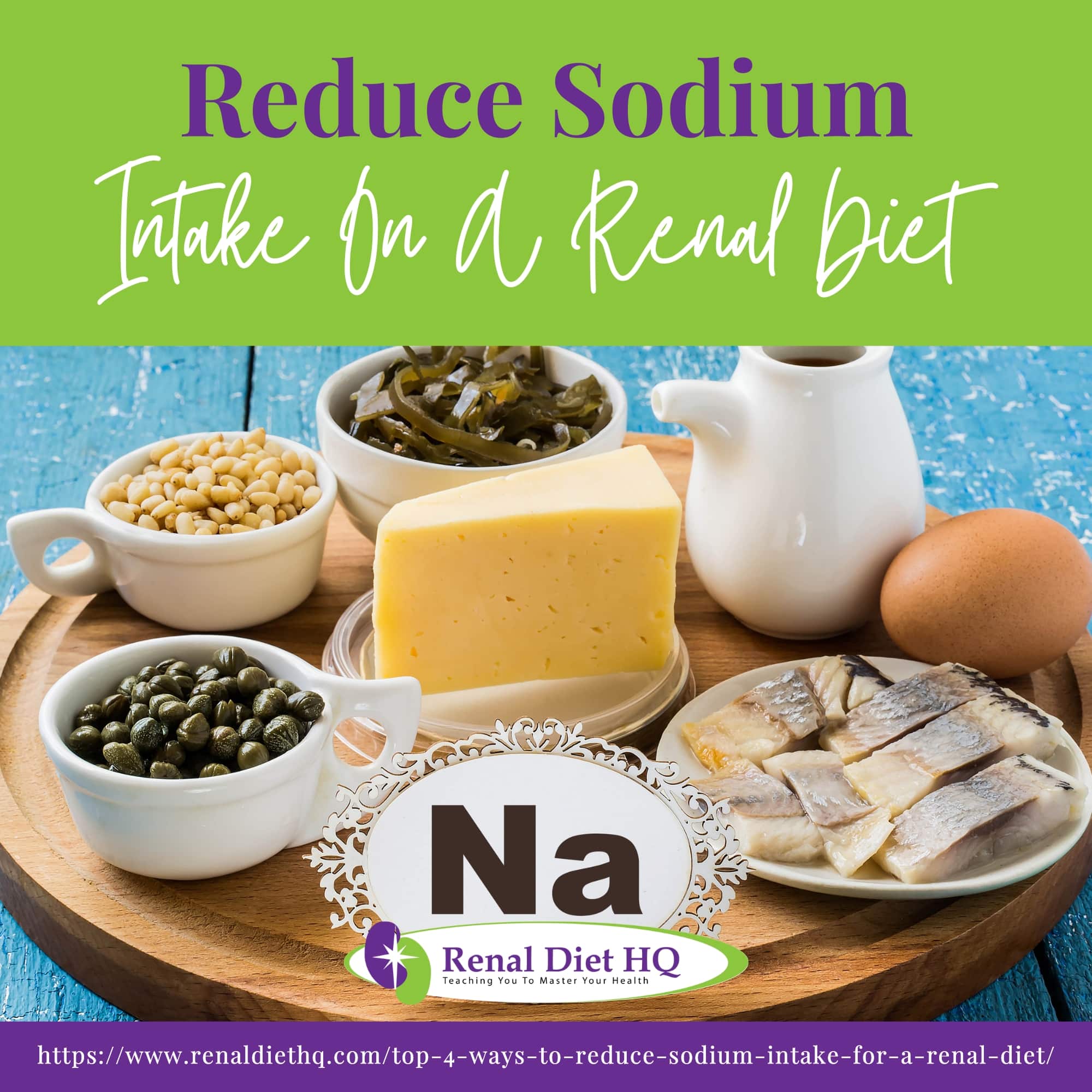
Individual Sodium Needs
You've got to gauge your body's sodium needs carefully to maintain a healthy balance. Consider the following:
- Sodium's Environmental Impact: Sodium is vital for bodily functions but excess intake can lead to environmental concerns like water pollution.
- Sodium Allergy Concerns: Allergies are rare, but they happen. Understanding your body's reactions to sodium is key.
- Sodium's Role in Hydration: Sodium helps maintain fluid balance, essential for proper hydration.
- Sodium and Athletic Performance: Athletes often need higher sodium levels due to sweat loss during intense exercise.
- Sodium and Bone Health: Sodium plays a role in maintaining bone health, although excess intake can lead to calcium loss.
Consulting Healthcare Team
Discussing your sodium intake with your healthcare team is an essential part of managing your renal diet effectively. Team collaboration is key in this process. Your doctors, dieticians, and pharmacists work together to understand your specific needs.
Patient education plays a crucial role here. You're taught about the impact of high sodium levels on your kidneys, and guided on how to make better food choices.
Regular check ups allow your healthcare team to monitor your progress and adjust your diet or medication if necessary. This is where medication consultation comes in. Your medications might affect your sodium levels, so it's important to discuss this with your team.
Prevention strategies are also shared, including tips on how to limit sodium in your meals. Remember, managing your renal health is a team effort.
Deciphering Sodium Content on Food Labels
Reading food labels can seem like deciphering a complex code, especially when it comes to sodium content. It's important you understand what these numbers mean for your health, particularly if you're on a renal diet.
Knowledge of these labels can guide you in choosing low-sodium products and managing your daily intake effectively.
Understanding Sodium on Labels
To maintain your renal health, it's crucial that you develop a solid understanding of the sodium content listed on food labels. Sodium's sources are varied, and it's absorbed into your body through the food you consume.
Once in your system, your kidneys control sodium excretion, but too much can lead to hypernatremia consequences like high blood pressure. Conversely, too little can result in hyponatremia risks including headaches and seizures.
Here's a quick guide to help you understand:
- Low sodium: 140mg or less per serving.
- Very low sodium: 35mg or less per serving.
- Sodium-free: Less than 5mg per serving.
- Reduced sodium: At least 25% less sodium than the regular product.
Choosing Low-Sodium Products
In the pursuit of better renal health, you've got to dig into the details on food labels for picking out low-sodium products. Understanding sodium content isn't just about debunking sodium myths, it's vital for maintaining fluid balance and protecting your kidneys.
Hydration importance also comes into play. Consuming too much sodium can lead to dehydration, hence, drinking enough water is crucial.
Salt substitutes often contain potassium, so understanding potassium's role is essential. While it can help maintain balance, excessive amounts might be harmful.
| Food | Sodium Content |
|---|---|
| Processed food | High |
| Fresh fruits & vegetables | Low |
| Salt substitutes | Variable |
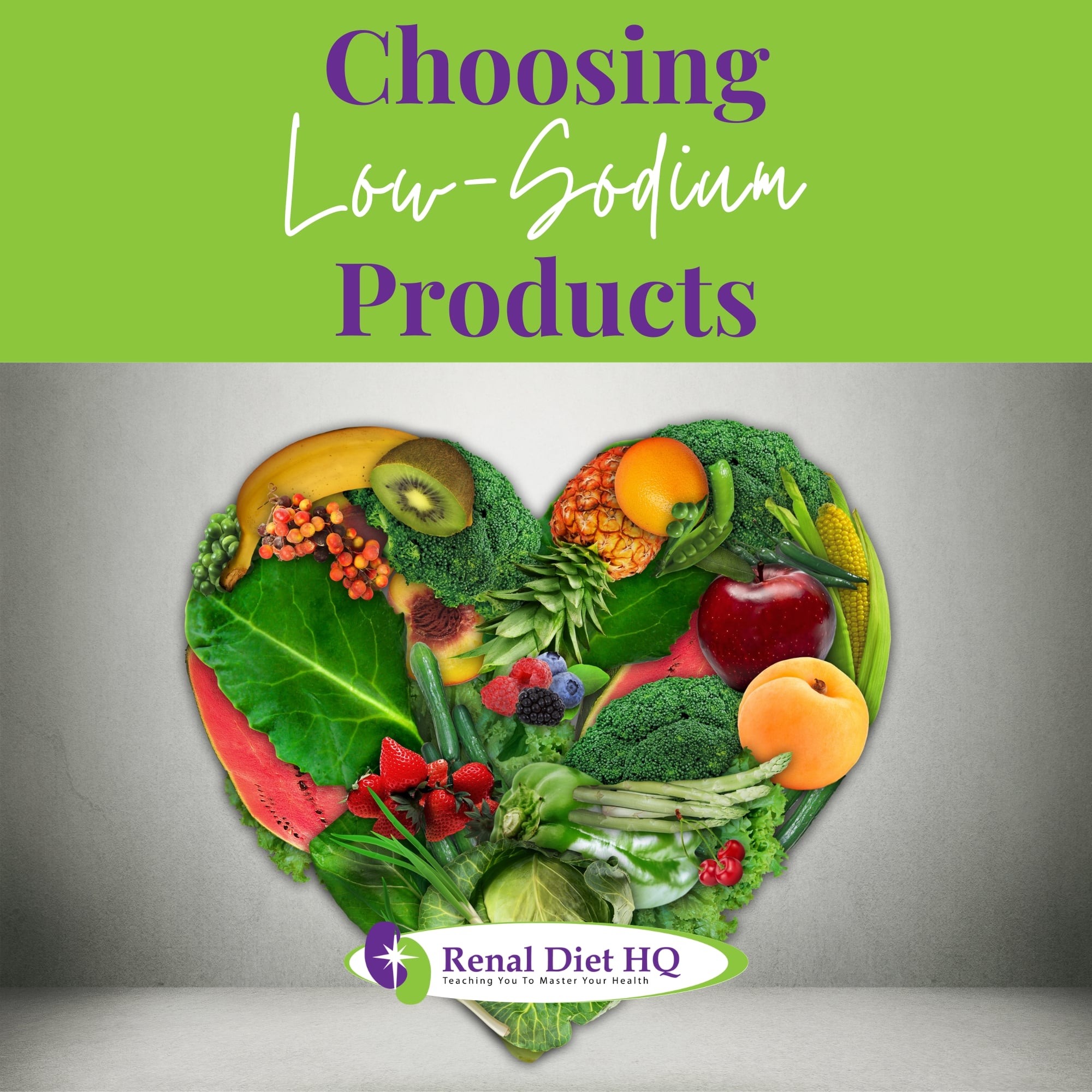
Uncovering Hidden Sodium in Everyday Foods
You might be surprised to know just how much sodium lurks in your everyday foods, particularly processed ones.
It's not just about avoiding the salt shaker, it's about learning which foods are unexpectedly high in sodium.
Consulting with a renal dietitian can offer valuable advice on how to navigate this often-overlooked aspect of your diet while dealing with Chronic Kidney Disease.
Sodium in Processed Foods
Despite their convenience, it's important to remember that processed foods often contain high levels of hidden sodium. This is particularly true when it comes to:
- Sodium in beverages: Even 'diet' drinks can have surprising amounts of sodium.
- Fast food sodium: Fast food is notorious for its high sodium content, even in 'healthier' options.
- Sodium in desserts: Beware of packaged cakes, cookies, and other sweets.
- Breakfast cereals' sodium: Yes, even your morning bowl of cereal can be a sodium bomb.
This is also true for dairy products, which often contain sodium used as a preservative.
As someone looking to serve others, it's crucial to be knowledgeable about these hidden sources of sodium and make healthier choices when possible.
Consulting Renal Dietitian Advice
When consulting with a renal dietitian, they'll help you uncover hidden sodium in everyday foods, a crucial step for maintaining your renal diet. Their expertise will guide you through patient counseling sessions, providing you with the necessary nutrition education to understand dietary guidelines for your condition.
They'll unravel the complexities of sodium content in foods, revealing how it influences your health and what you can do to control it. They're experts in crafting personalized diet plans, taking into account your lifestyle, preferences, and renal health.
The Benefits of Home Cooking and Whole Foods for Sodium Control
You'll find that home cooking and whole foods are key to controlling your sodium intake.
When you cook at home, you're in control of what goes into your food, allowing for careful sodium regulation.
Additionally, whole foods naturally contain less sodium, so choosing them over processed options can significantly reduce your overall sodium consumption.
Control Through Home Cooking
By cooking at home, you're gaining greater control over your sodium intake, which is essential for a renal diet. Here's a four-point plan for success:
- Sodium reducing techniques: Learn to cook with herbs and spices instead of salt. Even a small reduction can make a big difference.
- Condiment substitutions: Swap high-sodium sauces for lower-sodium alternatives. Lemon juice, vinegar, or homemade salsa can add flavor without the sodium.
- Meal planning advice: Plan your meals in advance. This helps you avoid last-minute high-sodium choices.
- Grocery shopping tips: Read labels carefully! Look for 'no salt added' or 'low sodium' labels.
Incorporate kidney-friendly recipes into your routine, and you'll find managing your renal diet becomes second nature.
More importantly, you're serving your health, and ultimately, those who depend on you. You can even make dairy free pudding for your family with only 4 ingredients!
Whole Foods' Sodium Content
In your quest to limit sodium, it's crucial to understand the sodium content in whole foods, as they're often healthier alternatives to processed items. Sodium rich vegetables like celery can be replaced with low sodium alternatives such as zucchini. Seafood's sodium content can vary, so opt for fresh varieties over canned or processed versions. Sodium in beverages is another hidden source, so hydrating with low sodium options, like plain water or unsweetened tea, is wise.
| Food Type | Recommendation |
|---|---|
| Vegetables | Swap sodium-rich for low sodium |
| Seafood | Choose fresh over canned |
| Beverages | Opt for low sodium drinks |
Experiment with low sodium spices to reduce overall intake. Understanding sodium content empowers you to make healthier choices, serving yourself and others better.
The Surprising Sodium Content in Condiments
You might be shocked to learn that common condiments like ketchup or soy sauce can pack a hefty sodium punch. Just one tablespoon of soy sauce, for example, contains nearly 1,000 milligrams of sodium, which is almost half of the recommended daily intake.
Don't despair - there are lower-sodium alternatives out there, and we're going to explore them.
Sodium in Common Condiments
Did you know there's around 2,000 milligrams of sodium in just one tablespoon of soy sauce? That's almost a day's worth of sodium in one serving! Many common condiments are packed with sodium, often due to deceptive marketing practices.
But don't fret, you have options:
- Sodium Free Seasonings: Spice blends without added salt can be just as flavorful.
- Salt Substitutes: These products use other minerals to mimic the taste of salt.
- Potassium Based Alternatives: These can help balance sodium levels in your body.
- Homemade Condiment Recipes: Control your intake by making your own sauces and dressings.
Alternatives to High-Sodium Condiments
Both low-sodium ketchup and homemade salsa are excellent alternatives to high-sodium condiments, and they'll significantly cut down your salt intake. You have a wealth of options to explore. Feel free to experiment with herbs substitution, salt-free seasonings, homemade dressings, low-sodium broths, and various vinegar varieties.
Here's a table to inspire you:
| Condiment | Alternative | Benefits |
|---|---|---|
| Regular Ketchup | Low-Sodium Ketchup | Lower sodium content |
| Store-bought Salsa | Homemade Salsa | Control over ingredients |
| Regular Dressings | Homemade Dressings | You decide what goes in |
| High-Sodium Broths | Low-Sodium Broths | Healthier option |
Making Dietary Changes for Better Kidney Health
To enhance your kidney health, it's essential to make specific dietary adjustments.
Start by implementing renal-friendly meals into your daily regimen, which are rich in fruits, vegetables, and lean proteins.
Additionally, it's crucial to limit your consumption of processed foods as they tend to be high in sodium, a mineral that can exacerbate kidney issues if taken in excess.
Implementing Renal-Friendly Meals
While you're planning your meals, remember that it's essential to implement renal-friendly dishes to maintain good kidney health. Here's a simple guide to help you:
- Renal friendly snacks: Opt for raw vegetables, unsalted popcorn, and fresh fruits. They're low in sodium, phosphorus, and potassium.
- Kidney supportive herbs: Incorporate herbs like parsley, celery seeds, and dandelion in your diet. They act as natural diuretics, promoting kidney health.
- Hydration importance: Drink enough water daily. It helps flush out toxins, aiding in proper kidney function.
- Potassium and Phosphorus implications: Regulate your intake. High levels can put a strain on your kidneys, while dealing with kidney failure.
Limiting Processed Food Consumption
You're making great strides in your kidney health, and limiting processed food consumption is your next challenge. Sodium's historical usage was as a preservative, but today, it's an unhealthy additive found in most processed foods.
These sources of sodium can lead to addiction symptoms such as a constant craving for salty foods. Overcoming sodium cravings is essential for your kidney health and overall wellbeing.
Consider the following unhealthy sodium sources, their sodium content, and healthier alternatives:
| Unhealthy Source | Sodium Content | Healthy Alternative |
|---|---|---|
| Processed meat | High | Fresh, lean meat |
| Canned soup | High | Homemade soup |
| Fast food | Excessive | Home-cooked meals |
| Packaged snacks | High | Fresh fruits and veggies |
| Ready meals | Excessive | Fresh, home-cooked meals |
General Strategies for Managing Sodium Intake
You're on the right track to better kidney health by considering your sodium intake. Opting for low-sodium foods is a vital step in this direction.
Additionally, cutting back on the amount of salt used in cooking can significantly decrease your overall sodium consumption.
Choosing Low-Sodium Foods
Even though it's challenging, you can significantly improve your health by opting for low-sodium foods. This includes being aware of sodium in unsuspected sources, such as:
- Sodium Rich Beverages: These can sneak up on you, so always check the labels.
- Low Sodium Snacks: Choose fresh fruits and vegetables over salty packaged snacks.
- Sodium in Medications: Some over-the-counter drugs can contain a surprising amount of sodium.
- Seafood's Sodium Content: Fresh seafood is a healthy choice, but watch out for high-sodium sauces.
Don't forget about dairy products, while they're necessary for a balanced diet, they can contain moderate amounts of sodium too.
Reducing Sodium in Cooking
Often, you'll find that reducing sodium in cooking is as simple as substituting high-sodium ingredients with their low-sodium alternatives. You can utilize sodium-free spices and salt substitutes to flavor your meals without adding unnecessary sodium.
Be aware of hidden sources too, like sodium in beverages, and opt for low-sodium or sodium-free options. Instead of store-bought versions, make homemade broths for soups and stews, giving you complete control over sodium content.
Natural flavor enhancers such as lemon juice, vinegar, and fresh herbs can also add a punch of flavor without the added sodium.
Practical Tips for Lowering Sodium in Your Diet
You can significantly lower your sodium intake by paying close attention to food labels. Opt for foods labeled as 'low sodium', 'reduced sodium', or 'no salt added'.
Reading Food Labels
Checking the food labels is an essential step you'd want to take to effectively reduce your sodium intake. Sodium misconceptions and health myths can lead to excessive intake, threatening your health. So, it's vital to understand what you're consuming.
Here's a simple guide:
- Check the sodium content: Food labels list the amount of sodium per serving. Lower sodium options are always better.
- Identify sodium's synonyms: Sodium isn't just 'salt'. It hides under names like monosodium glutamate, baking soda, or disodium phosphate.
- Consider salt substitutes: While these can lower sodium, they might contain other substances like potassium which may not be safe for everyone.
- Sodium-free diets and hydration's role: Consuming adequate fluids helps maintain a balance of sodium in your body.
With this knowledge, you're well equipped to make health-conscious choices.
Choosing Low-Sodium Foods
Navigating the grocery store for low-sodium foods can be quite a challenge, but it's definitely worth the effort. You need to be cautious about sodium in beverages; many drinks masquerade as healthy but are packed with sodium. Opt for water or homemade, unsweetened drinks.
When it comes to low sodium snacks, go for fresh fruits and veggies over processed or packaged foods. Sodium in dairy can also be a concern; choose low-sodium cheese and unsalted butter.
Sodium reduction techniques include using herbs and low sodium spices to flavor your food instead of salt. Don't be afraid to experiment with flavors.
FAQs for Reducing Sodium Intake on a Renal Diet
When you drastically cut sodium from your diet, you're at risk for sodium deficiency. Symptoms, termed hyponatremia, can include nausea, headache, confusion, and fatigue. Despite sodium's role in maintaining fluid balance, too little can upset your body's equilibrium.
To avoid these risks, make careful dietary substitutions instead of going completely sodium-free. Research sodium-free recipes, but remember, your body still needs some sodium to function properly.
Did you know that 98% of the sodium we consume is excreted by our kidneys?
Excessive sodium intake can disrupt your Sodium Potassium balance, leading to high blood pressure. Additionally, it can increase Phosphorus absorption, which is harmful to your kidney function.
Dietary adjustments, like reducing sodium, can help maintain a healthy Sodium Potassium pump. Remember, it's not just about sodium reduction, but overall balance for optimal health.
Yes, there are specific medications that can assist in managing sodium levels for kidney patients. Diuretics function by helping your kidneys eliminate sodium and water, reducing blood pressure.
Sodium binders can prevent absorption of excess sodium. Blood pressure medications often help keep sodium levels in check. Kidney-friendly supplements might also aid in sodium balance.
However, it's crucial to adjust these medications according to your dietary intake. Always consult your doctor for personalized advice as you deal with Chronic Kidney Disease.
Imagine a garden filled with herbs. You can use these in an infusion to season dishes.
Lemon zest, with its bright, tangy flavor, can also be a wonderful salt substitute if you're watching your salt intake.
Vinegars, in their many varieties, add tanginess. If you're a fan of heat, make spicy adjustments with chili or pepper.
Don't forget garlic, a powerhouse of flavor. These alternatives not only enhance taste but also keep your kidney health in check by reducing sodium intake.
When dining out or traveling, you should be mindful of sodium-rich foods. Opt for dishes made with fresh ingredients and avoid packaged foods that often contain high sodium. Develop restaurant strategies, such as asking for sauces on the side or requesting no added salt.
Pack your own low-sodium snacks when traveling. Making smart dining choices, like choosing grilled over fried, can greatly manage your sodium intake. Knowledge is power, so keep informed about your dietary needs.
Reduce Sodium Intake on a Renal Diet
Managing your sodium intake isn't about deprivation, but rather, it's a savory journey towards better kidney health and the long-term effect diet has on your kidneys.
By deciphering food labels, uncovering hidden sodium, and making mindful dietary alterations, you're not only dialing down your sodium consumption, but also dialing up your kidney health before you reach any type of advanced kidney disease.
Remember, every small change you make can create a ripple effect towards a healthier lifestyle.
So, go on, savor the flavor of good health. Your kidneys will thank you as you navigate through this Chronic Kidney Disease journey and a reduced sodium diet.

